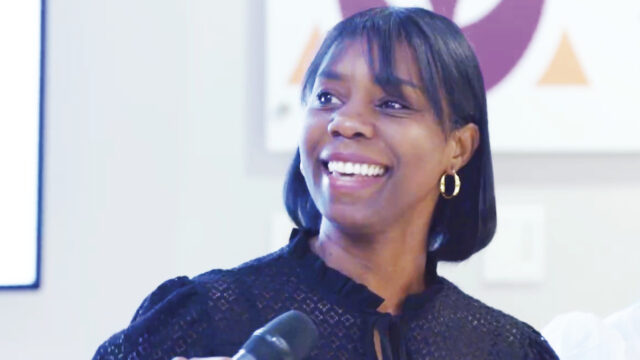
It’s that time of year when math class is full of spooky sums! Frightful fractions! Paranormal parabolas! Um, maleficent terror percent error?
Here are some fun ideas for Halloween math activities for middle school and high school students.
Fun Halloween math activities
Good timing
Let's say this year Halloween is not on a school night, and it’s on a full moon. What are the odds of that happening?
- For middle schoolers, what is the probability that Halloween will fall on a Friday or Saturday in a given year? What is the probability that it is on a full moon (which occurs every 29.5 days)?
- For high schoolers, ask whether these probabilities are independent, and have them find the odds that both occur at the same time.
- This can extend into a creepy coincidences project. Have your students ever said the same thing as a friend at the same time? Did they learn that another family has a pet with the same name? Ask students to think about an instance where two or more things happened at the same time, and then have them calculate the odds of that occurring. Embrace the fact that math is not a perfect science! How do you calculate the probability of two people saying the same word at the same time?
Possible answers: There are seven days in a week, so there is a 2/7 chance that any given day would fall on a Friday or Saturday. A full moon occurs every 29.5 days, so there is a 1/29.5 chance that any given day would fall on a full moon. These probabilities are independent, so the probability that both occur is (2/7) • (1/29.5) ≈ 0.0097, or 0.97%. Answers will vary wildly for the last project. Assuming the word wasn't too unusual, it probably comes from a lexicon of around 800 words. And assuming the speakers start talking about a new topic once every 60 seconds, the probability that they speak at the same time is around 0.0165 (note that the previous link involves multivariable calculus; in lieu of internet research, students might intuit that there's about a 1% chance of speaking at the same time). Since these two probabilities are independent, the odds that two people say the same word at the same time is around 1/800 • 0.0165 ≈ 0.00002, or 0.002%.
The great candy swap
There’s one image that many children associate with Halloween: a giant bag of candy! There’s a lot of math to be found in supernatural sweets.
- For middle schoolers, have them take on the role of a candy seller trying to assemble the perfect bag of candy. They should start by listing all of the candies they would want to sell together in a mixed bag and then survey their classmates to see which are the most popular. If there are 100 pieces of candy in the bag, what should the ratio of candies be so that every student gets what they want? How would the quantities change if there were only 20 pieces of candy? This activity is similar to Into AGA author Robert Kaplinsky’s chip bag problems, where students can analyze how many different types of chips should go in a mixed box.
- For high schoolers, have them start a full-on candy business. They should begin by making a catalog of what candy they will sell. Have them research how much the candy costs to buy in bulk. Will they sell small or large packs? Mixed bags? How much will each pack cost? Once everyone’s store is ready, all students get 100 (fake) dollars to spend and get an open market day. At the end, who earned the most money? Who earned the most profit? For a more authentic experience, have students design their stores, complete with shelves, custom bags, advertisements, and anything else they think will drive business. But don’t let them forget to include these costs in their profit calculations!
Possible answers: Students could survey the class and extend the proportion of each candy picked to a fraction over 100 or 20. For example, if three students out of a class of 17 vote for Snickers, then a mixed bag of 100 should include 18 Snickers (3/17 ≈ 17.6/100) and a mixed bag of 20 should include four Snickers (3/17 ≈ 3.53/20). For students looking to calculate the cost of making a mixed bag, they should research the cost of buying a bag of Snickers, calculate the unit cost, and multiply that by 18 for the bag of 100 or 4 for the bag of 20.
Pumpkin math
Pumpkins are an excellent way to introduce a fun Halloween math activity into so many math topics. Pre-kindergarteners can count them, elementary schoolers can measure them, and high schoolers can launch them with trebuchets! Check out some problems for teachers and students from our Into AGA program. In these free worksheets, students graph the circumferences of prize-winning pumpkins (Algebra 1) and model the path of a pumpkin launch (Algebra 2).
Zombie web
Can you escape the web of zombies in 13 steps and exit safely? Challenge yourself with a web made up of algebraic expressions that include exponents and square roots, all tangled up with angles, area, and other ghostly geometry concepts. This puzzle is designed for students in 7th grade and older and comes with an answer key for teachers.
***
Check out HMH Into AGA as our solution for shaping high school math students into confident mathematicians. (Or should I say mummified mathematicians? Okay, I'll stop.)
This blog, originally published in 2021, has been updated for 2025.
Download our FREE calendar of activities!
Related Reading

Ms. Madge Alexandre, Miami-Dade reading teacher and Read 180 user



















